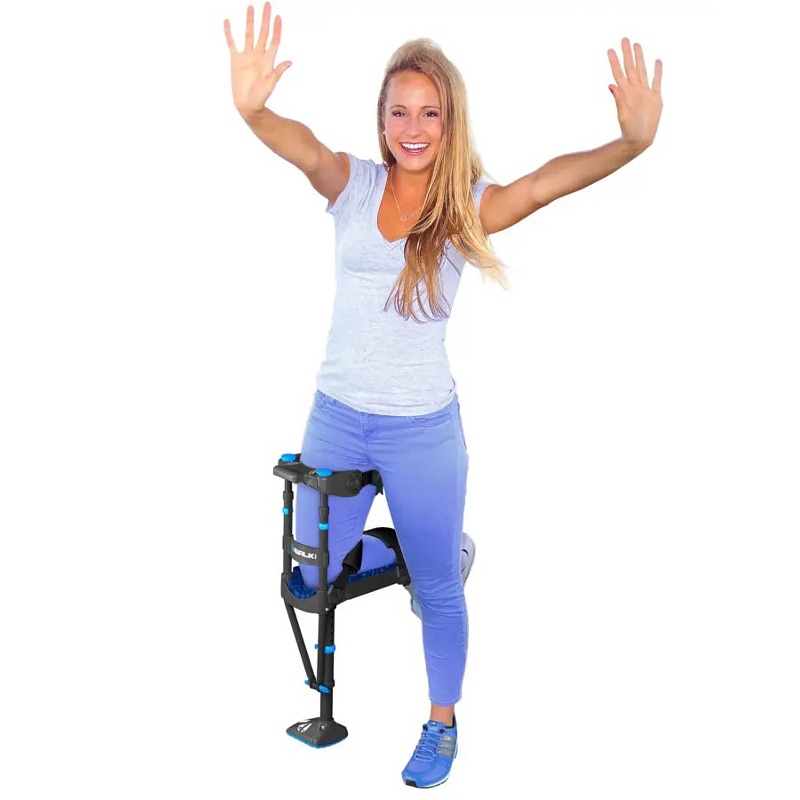Walking with the iWalk 3.0
Hands-free crutches are an innovative and intuitive way of regaining your independence following a lower-limb injury or break. Whilst the iWalk 3.0 might look daunting, getting to grips with wearing and walking with one can take some time.
We've put together this guide to help get you back on your feet in a safe and secure manner. Browse the information below and take a look at our tips and tricks section to find out how the iWalk 3.0 can help you do what you love again following a serious injury.
What Is the iWalk?
The iWalk has changed the game when recovering from surgery on a lower limb. Boasting an incredible array of updated comfort and performance based improvements, the iWalk 3.0 is the newest version of this 100% hands-free crutch.
iWALK 3.0 Hands Free Crutch
- Innovative hands free crutch for speedy rehabilitation
- Great for Achilles tendon injuries, sprained ankles and more
- Maintain your mobility and independence
- Updated and upgraded design for even greater comfort and quality
The iWalk works by attaching itself to your leg, creating a 90° platform for your knee. This forces the knee to bend, allowing the rest of the crutch to continue downwards into the floor where it forms a supportive platform in the absence of your leg.
How Safe Is the iWalk 3.0?
When correctly fitted and assembled, the iWalk is a safe and secure crutch that forms a stable platform for an injured limb to rest up. There are however, some precursors to use, which include the fact that:
- You must be between 4’10” (147cm) and 6’6” (198cm)
- You must weigh 275 pounds (125kg) or less
- You must have a maximum thigh circumference (at top of the leg) of 28" (71cm) or less
- Your injury must be on one leg only
- Your injury must be below the knee
- You must be able to bend your injured leg 90 degrees at the knee
- You must have full functionality in your uninjured leg
- You should have average strength and balance
- Pre-injury, you must be able to walk normally without a limp or shuffle
How Do I Start Walking With the iWalk?
Once you've assembled and fitted your iWalk, we recommend starting slow and small. Getting used to using a hands-free crutch can take time, but when you get it right, the payoff and results are amazing.
Find a hallway or straight, open area where you can comfortably take 3 to 4 paces without interruption. Concentrate on evenly distributing your weight between your good leg and your injured leg.
What Next?
Once you've got the hang of taking a few steps and you're feeling confident and stable, it's time to get out and about! Take a look at the video below to see how to safely and securely build confidence when using the iWalk:
Tips and Tricks
- At first, we recommend building up confidence at home
- Find an area (hallway or lengthy room) and steadily increase the amount of steps you take at one time
- Always practice walking on a flat, stable surface where the foot can plant safely
- If you're struggling, lower the iWalk so it's below the height of your good leg whilst practising
- Always evenly distribute weight 50/50 between your good and injured leg
- Try to avoid the temptation to look down!
If You're Still Struggling...
Don't fret. The iWalk can take some time to get used to. It can feel like a very unnatural movement as both your feet aren't firmly planted on the floor.
We strongly recommend that you persist with building up confidence if you're struggling.
Additional Content
If you're after assembly or fitting instructions, click one of the links below:

